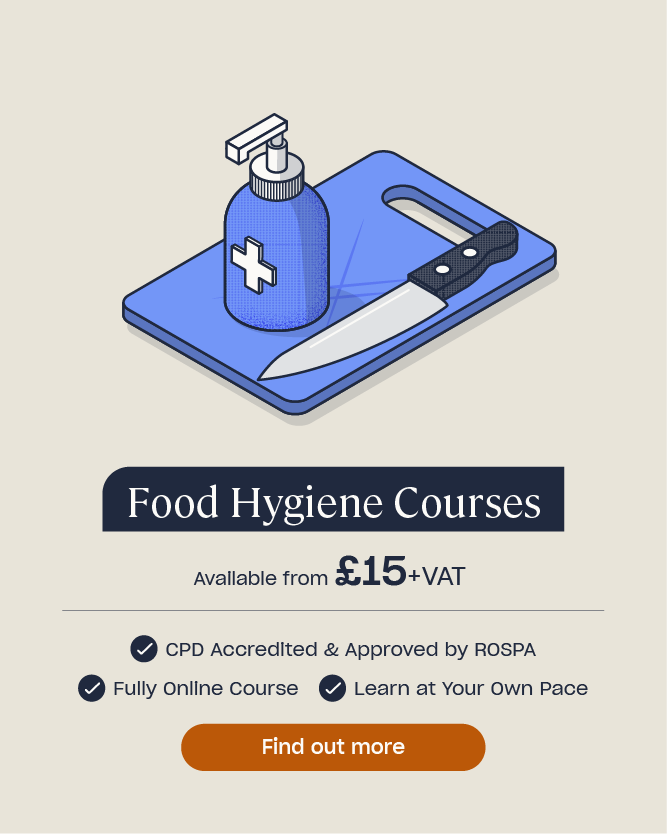How to Store Food in the Freezer
Freezing is a great way to preserve foods and prevent food waste, as it stops any harmful bacteria from growing and allows you to keep leftovers for several months without them going bad. But do you know how to correctly store food in the freezer to maintain food safety? In this article, we’ll look at what food goes where in the freezer, how to organise your freezer drawers and how long you can keep food in the freezer for.

What Food Goes Where in a Freezer?
Whether you own a stand-alone freezer with drawers, a fridge freezer with a frozen compartment or a chest freezer, keeping your freezer organised is essential to prevent food waste and make the most of your frozen foods.
Before organising what’s inside your freezer, however, make sure you’ve taken good care of the freezer itself. When was the last time you defrosted your freezer? Doing so is essential to keep it running efficiently, prevent ice build-up and reduce the running costs. Many new freezers are designed to be frost-free and don’t need defrosting, but older models need to be done at least once a year. Once that’s done and the inside of your freezer is clean, then you can begin to organise it.

How to Organise Freezer Drawers
Unlike your fridge shelves, there are no rules when it comes to where exactly you should store food in your freezer, as each part of the freezer should be at an equal temperature, around -18 °C. If you haven’t defrosted your freezer recently and there’s a large build-up of frost and ice at the back, then this part will likely be the coldest because the air can’t circulate properly.
To organise your freezer drawers well, it’s a good idea to designate different drawers for different food types. As an example, you could use:
- The bottom freezer drawer for frozen fruit and vegetables – peas, sweetcorn, broccoli, oven chips, berry mixes, etc.
- The middle freezer drawer for frozen meat, fish and dairy products – chicken breasts, chicken nuggets, beef mince, battered fish, salmon fillets, ice cream, frozen milk, cheese, etc.
- The top freezer drawer for labelled containers and bread products – leftovers, batch cooking, ready meals, soups and sauces, bread loaves, garlic bread, etc.
Separating your frozen food types like this will make them much easier to locate when you need them and help you prevent food waste.

What to Store in Freezer Doors
Does your freezer have storage in the door? If so, bear in mind that this is likely to be the warmest part of your freezer, as the door is opened frequently and more likely to be exposed to room temperature more often. For this reason, use the doors to store low-risk foods that are less likely to spoil, like bread products or frozen vegetables.
Want to Learn More?
If you are looking to learn more about food safety and food hygiene, take a look at our extensive library of Food Hygiene Courses to find exactly what you are looking for.
How to Store Food in a Chest Freezer
If you own a chest freezer with one large compartment or a French-style fridge freezer with one or two deep, pull-out freezer drawers, then staying on top of your organisation is vital to prevent frozen foods from getting lost and going to waste.
It might be a good idea to invest in some baskets or dividers that you can use to separate out different food items – you can even get stackable baskets made especially for deep chest freezers. Then, separate your frozen food items into categories, like with the freezer drawers above, and label the baskets accordingly.
Another idea is to store the food products in your chest freezer or deep drawers vertically – stand boxes and packets on their ends rather than laid flat so you can easily see what you have in there, a bit like a library.

What is the Best Container to Freeze Food in?
Most food containers can be used in the freezer, whether they’re made of glass or plastic. Cardboard, plastic food bags and foil containers can also be frozen, but note that cardboard can sometimes go damp or soggy in icy conditions and deteriorate quickly.
Whatever you use, the best freezer containers have:
- A tight-fitting lid or seal to avoid freezer burn, spills and leaks.
- A way of labelling the container with their contents and the date of freezing.
How to Store Food in the Freezer Without Plastic
Most people own plastic food containers with matching lids, used for storing leftovers or batch-cooked foods in the freezer. Plastic containers aren’t the only way to store food in the freezer, however. Consider one of the following options which may be better for your health, your food and the environment:
- Glass storage containers with tight-fitting lids.
- Glass storage jars with clip-tops.
- Reusable silicone bags with leak-proof seals.
- Stainless steel tubs with lids.
- Bamboo containers, often with wooden or silicone lids.
- Reusable silicone food covers that can be put over bowls.

How Long Can You Keep Food in the Freezer?
Most foods can be kept in the freezer for up to three months before their quality starts to deteriorate. After this time, the frozen food can still be eaten but it may have changed texture or taste because of the freezing process. Take a look at our guide on how long you can freeze foods for to learn more about freezing specific food items.
When putting food containers into the freezer, make sure you label them accurately. Write down their contents, the date of freezing and the date three months from then to ensure you know exactly what you have and when it needs to be used by.
Furthermore, remember to always defrost and reheat your frozen foods correctly to maintain food safety. Some foods can be cooked directly from frozen, whereas others must be fully defrosted before use.

Further Resources
- How to Defrost a Freezer
- Do You Know Which Fridge Shelves You Should Store Your Food On?
- How to Clean a Kitchen
- How Long Does Food Last in the Freezer? A Storage Guide
- What is the Difference between Use By & Best Before Dates?
- Safe Temperatures for Food Storage: A Free Guide to Cooling and Chilling Times
- Should I Store Open Food Cans In The Fridge?







